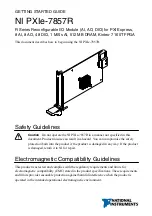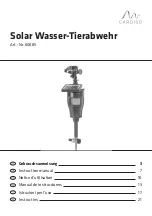
3
Problem
Cause
Remedy
3.
Worn or
damaged parts.
a.
If arm or body of sprinkler is bent or damaged, replace sprinkler or part if
available.
b.
Arm spring
tension may need increasing.
Metal models:
Unhook spring
from arm with needle-nosed pliers. Bend slightly to shorten and re-hook.
Plastic Models:
Unhook spring from arm with needle-nosed pliers, re-hook to
next adjoining protrusion on arm.
c.
Replace bearing washers if less than 2/3 of original thickness, if mineral
deposits are a problem, or if oil based products have been used.
B.
Sprinkler
rotates to one side
and stops.
1.
Check points for
non-rotation in Sec-
tion A, 1-3.
2.
Excessive
water pressure. Just
as each sprinkler
has a lower pressure
limit for proper oper-
ation, there is also
an upper limit. For
most sprinklers the
limit is 80 psi at the
head. The optimum
operating pressure
is around 50 psi.
Pressure that is too
high will, at the
worst, cause the
sprinkler to stall, and
at the least, cause
the premature wear
of the sprinkler
parts. If the sprinkler
rotates or reverses
very fast, this a fore-
warning of exces-
sive pressure.
a.
Put more heads on your line or try making adjustments in the flow at the
valve. In some cases, installing a pressure regulator ahead of your main
shutoff valve is a good idea and will protect your entire system.
Impact Sprinkler Troubleshooting Guide
Continued



























